Arctic-Grade Accommodation: Lida Group’s Insulated Container Worker Dormitories Feature High-Quality Prefab Building Envelope
2025-Aug-21 14:21:54
By Admin
1. Introduction
The Arctic region, with its extreme cold, harsh winds, and prolonged periods of darkness, presents one of the most challenging environments for human habitation and industrial operations. Yet, this remote and inhospitable area is rich in natural resources, including oil, gas, and minerals, driving a growing number of mega-projects in sectors such as energy extraction, mining, and infrastructure development. These projects require a reliable workforce, and providing safe, comfortable, and functional accommodation for workers in such extreme conditions is a critical priority.
Lida Group, a global leader in prefabricated building solutions, has risen to this challenge with its Arctic-grade insulated container worker dormitories. These innovative structures are designed to withstand the harshest Arctic conditions while ensuring the well-being and productivity of workers. Central to their performance is a high-quality prefab building envelope that delivers exceptional insulation, durability, and protection. This article explores the features, benefits, real-world applications, and future potential of Lida Group’s Arctic-grade accommodation, highlighting how their advanced building envelope sets new standards for Arctic worker housing.
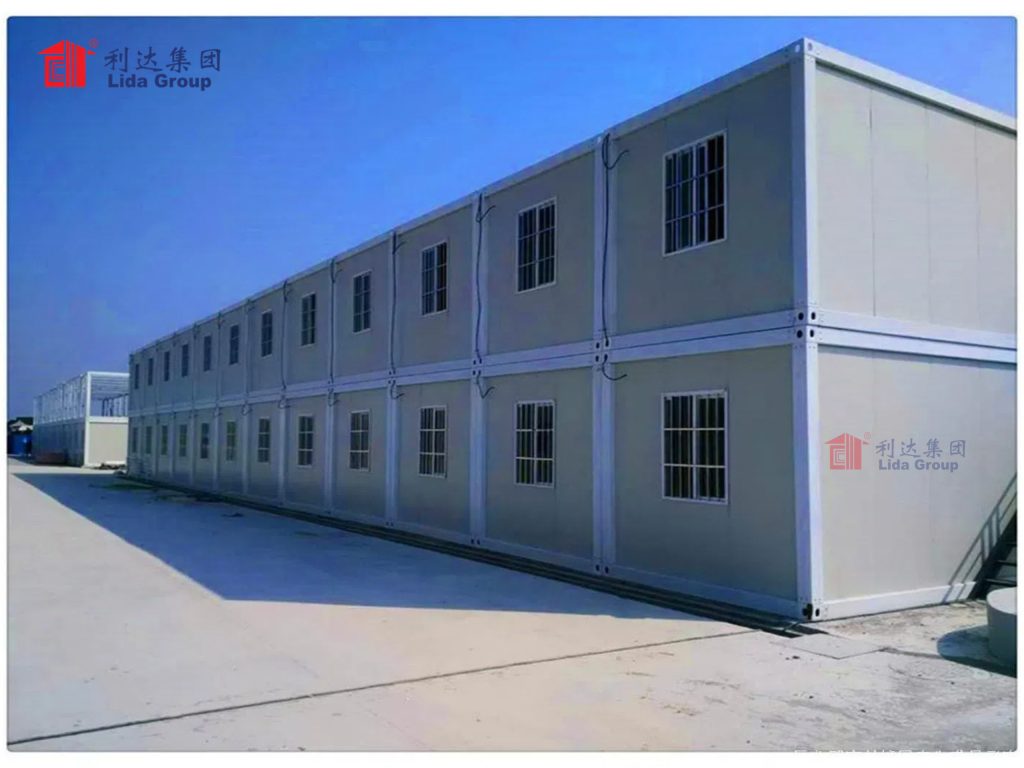
2. The Unique Challenges of Arctic Accommodation
2.1. Extreme Temperature Extremes
Arctic temperatures can plummet to as low as -60°C (-76°F), with average winter temperatures often ranging between -30°C and -40°C. Such extreme cold poses severe risks to human health, including frostbite, hypothermia, and respiratory issues. For worker accommodation, maintaining a stable and comfortable internal temperature is not just a matter of comfort but of survival.
Traditional temporary housing solutions, such as tents or basic cabins, fail to provide adequate insulation in these conditions, requiring excessive energy consumption to keep interiors warm. This not only increases operational costs but also creates a reliance on fuel supplies that are logistically challenging to transport to remote Arctic sites.
2.2. High Winds and Snow Loads
Arctic regions are prone to violent storms, with wind speeds exceeding 100 km/h (62 mph) during blizzards. These winds carry fine, abrasive snow particles that can damage exposed structures and penetrate gaps in building envelopes, leading to heat loss and interior damage.
In addition, heavy snowfall can result in significant snow loads on roofs and structures, potentially causing collapse if the accommodation is not designed to withstand these forces. The combination of high winds and snow requires buildings with robust structural integrity and weathertight envelopes.
2.3. Prolonged Darkness and Polar Day
The Arctic experiences extreme variations in daylight, with months of continuous darkness (polar night) in winter and continuous daylight (polar day) in summer. These conditions disrupt circadian rhythms, affecting worker sleep patterns, mood, and productivity. Accommodation must therefore include features that mitigate these effects, such as controlled lighting systems and sound insulation to create a sense of normalcy.
2.4. Logistical and Supply Chain Constraints
Arctic projects are often located hundreds of kilometers from the nearest urban centers, with limited or no road access. Supplies, including building materials and fuel, must be transported by air, ice roads (seasonally), or specialized vessels, making logistics extremely challenging and costly. Any accommodation solution must be easy to transport, quick to deploy, and require minimal on-site construction to minimize reliance on complex supply chains.
2.5. Environmental Sensitivity
The Arctic ecosystem is fragile and highly vulnerable to human activity. Construction and operation of worker accommodation must adhere to strict environmental regulations to avoid pollution, habitat destruction, and disruption to local wildlife. This includes minimizing waste, reducing energy consumption, and using sustainable materials.
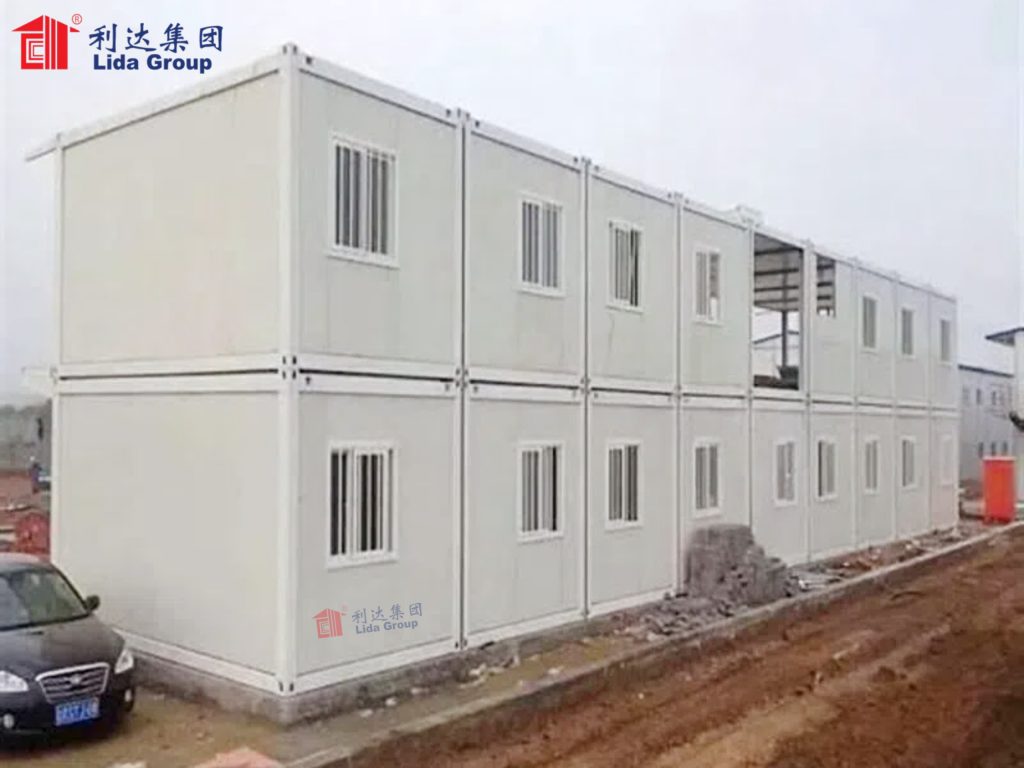
3. Lida Group’s High-Quality Prefab Building Envelope: The Foundation of Arctic-Grade Accommodation
3.1. What is a Building Envelope?
The building envelope is the physical barrier between the interior of a structure and the external environment. It includes the roof, walls, floors, windows, and doors, and plays a critical role in controlling heat transfer, air and moisture infiltration, and sound transmission. In Arctic conditions, the performance of the building envelope is paramount, as it directly impacts energy efficiency, structural integrity, and indoor comfort.
3.2. Components of Lida Group’s Arctic-Grade Building Envelope
Lida Group’s prefab building envelope for Arctic container dormitories is engineered to meet the unique demands of extreme cold environments. It consists of several key components:
- Insulated Panels: The walls, roof, and floor of the container dormitories are constructed using high-performance insulated panels. These panels typically feature a core of rigid polyurethane foam (PU) or extruded polystyrene (XPS), both of which offer excellent thermal resistance (R-value). The core is sandwiched between two outer layers of galvanized steel, which provide structural strength and protection against the elements. The panels are factory-fabricated to precise specifications, ensuring consistent quality and performance.
- Thermal Breaks: To prevent heat loss through conduction, the building envelope incorporates thermal breaks—non-conductive materials placed between metal components (such as wall frames and fasteners) that would otherwise create a path for heat to escape. This is particularly important in steel structures, where metal is a good conductor of heat.
- Weather Seals and Gaskets: All joints, seams, and openings in the building envelope are sealed with specialized weather-resistant gaskets and sealants. These materials are designed to withstand extreme temperatures and prevent air and moisture infiltration, which can lead to heat loss, condensation, and structural damage.
- High-Performance Windows and Doors: Windows and doors are critical points of heat loss in any building, and this is amplified in the Arctic. Lida Group’s Arctic dormitories feature triple-glazed windows with low-emissivity (low-e) coatings and thermal breaks in the frames. Exterior doors are insulated, airtight, and fitted with multiple gaskets to minimize heat transfer. They also include features such as heated thresholds to prevent ice buildup.
- Vapor Barriers: In cold climates, warm, moist air from the interior can condense within the building envelope if not properly controlled, leading to mold growth, rot, and reduced insulation performance. Lida Group’s envelope includes a continuous vapor barrier on the interior side of the insulation to prevent moisture migration into the wall and roof assemblies.
3.3. Performance Characteristics
The Arctic-grade building envelope delivers exceptional performance metrics:
- Thermal Resistance: The insulated panels provide a high R-value, typically exceeding R-40 for walls and R-50 for roofs, ensuring minimal heat loss even in extreme cold. This allows the dormitories to maintain comfortable interior temperatures (18-22°C) with significantly lower energy consumption compared to traditional structures.
- Air Tightness: The combination of weather seals, gaskets, and precision manufacturing results in extremely low air leakage rates, typically less than 0.5 air changes per hour at 50 Pascals (ACH50). This reduces heat loss through infiltration and maintains consistent indoor air quality.
- Structural Strength: The steel-reinforced panels and robust framing allow the envelope to withstand wind loads of up to 3 kPa (62.6 psf) and snow loads of up to 5 kPa (104.4 psf), ensuring structural integrity during severe storms.
- Durability: The galvanized steel outer layers are resistant to corrosion, while the insulation cores are unaffected by moisture (when properly sealed), ensuring a long service life even in harsh Arctic conditions. The envelope is also designed to resist damage from ice, snow, and abrasive wind-blown particles.
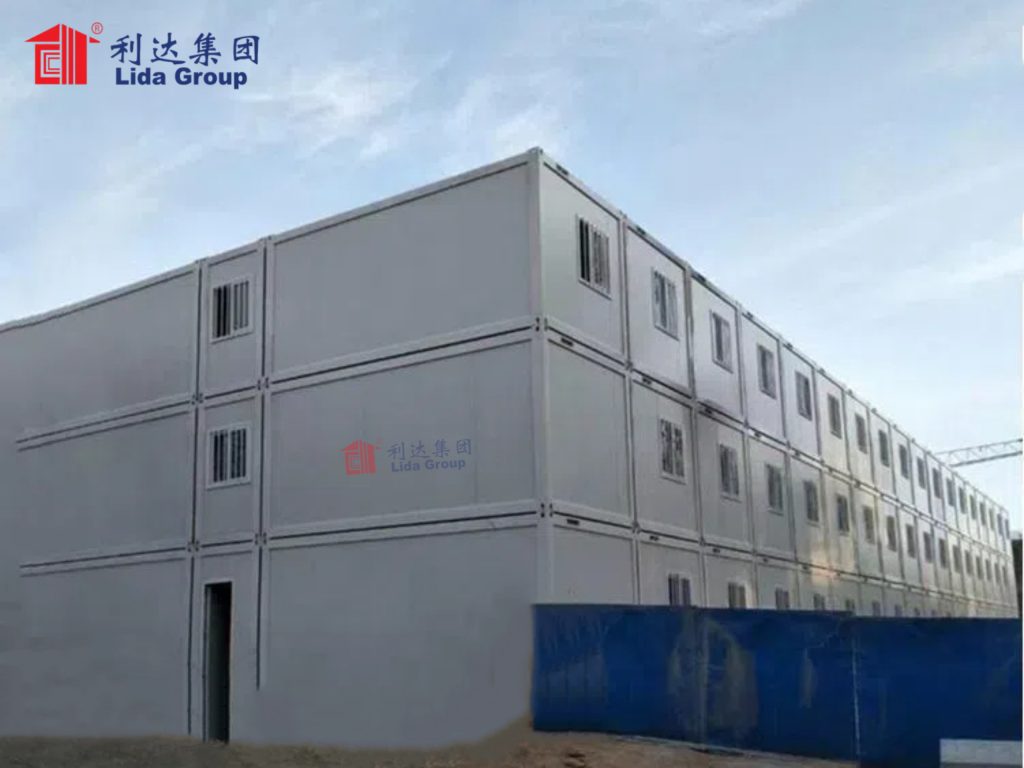
4. Design and Features of Lida Group’s Arctic-Grade Container Dormitories
4.1. Container-Based Modular Design
Lida Group’s Arctic dormitories are based on modified shipping containers, chosen for their inherent durability, portability, and structural strength. Standard 20-foot and 40-foot containers are converted into living spaces, with multiple units combined to create larger dormitory complexes. This modular design offers several advantages for Arctic projects:
- Transportability: Containers can be transported by ship, aircraft, or ice road, making them suitable for remote Arctic locations with limited access. Their standardized dimensions simplify logistics and reduce transportation costs.
- Rapid Deployment: The containers are fully fabricated and fitted out in factories, requiring only minimal on-site assembly. This allows dormitories to be operational in weeks rather than months, critical for meeting tight project timelines in the Arctic, where construction seasons are short.
- Scalability: Additional container units can be easily added as workforce numbers increase, providing flexibility to adapt to project needs.
4.2. Interior Layout and Amenities
The interior of the Arctic container dormitories is designed to maximize comfort and functionality in a compact space. Typical features include:
- Sleeping Quarters: Single or double occupancy rooms with insulated bunk beds, storage lockers, and bedside lighting. Mattresses are designed for cold climates, with moisture-wicking covers.
- Common Areas: Shared spaces for dining, relaxation, and socializing, including seating, tables, and entertainment systems (such as televisions and Wi-Fi). These areas help mitigate the effects of isolation and prolonged darkness.
- Sanitary Facilities: En-suite or shared bathrooms with hot water showers, toilets, and sinks. Plumbing systems are insulated and heated to prevent freezing.
- Kitchen and Dining: Compact kitchens with energy-efficient appliances, including refrigerators, microwaves, and stoves, designed to operate in cold temperatures. Dining areas are spacious enough to accommodate workers during meal times.
- Climate Control: Heating, ventilation, and air conditioning (HVAC) systems specifically designed for Arctic conditions. These systems include high-efficiency heaters, air exchangers to maintain indoor air quality, and humidity control to prevent condensation.
4.3. Energy Efficiency and Power Systems
Energy efficiency is critical in the Arctic, where fuel is expensive and difficult to transport. Lida Group’s dormitories incorporate several features to minimize energy consumption:
- High-Efficiency Heating: HVAC systems use energy-efficient heat pumps or radiant floor heating, which distribute heat evenly and reduce energy waste. Heat recovery ventilators (HRVs) capture heat from exhaust air to preheat incoming fresh air, further reducing energy use.
- Insulation Optimization: In addition to the building envelope, pipes, ducts, and electrical systems are insulated to prevent heat loss.
- Renewable Energy Integration: Where possible, the dormitories are equipped with solar panels (mounted on roofs or nearby structures) and wind turbines to supplement power needs. Battery storage systems store excess energy for use during periods of low sunlight or wind.
- Smart Energy Management: Systems monitor energy usage and adjust heating and lighting based on occupancy and external conditions, optimizing efficiency.
4.4. Safety and Emergency Features
Safety is paramount in the Arctic, where emergency response times can be long. Lida Group’s dormitories include several safety features:
- Fire Detection and Suppression: Smoke detectors, heat sensors, and automatic sprinkler systems (with antifreeze solutions) are installed throughout the dormitories. Fire extinguishers and emergency exits are clearly marked.
- Emergency Communication: Two-way radios, emergency call buttons, and satellite phones ensure communication in case of power outages or emergencies.
- Backup Power: Generators (powered by diesel or alternative fuels) provide backup electricity in case of primary power failure, ensuring critical systems like heating and lighting remain operational.
- Cold-Weather Survival Gear: Emergency kits containing warm clothing, blankets, and first-aid supplies are stored in accessible locations.
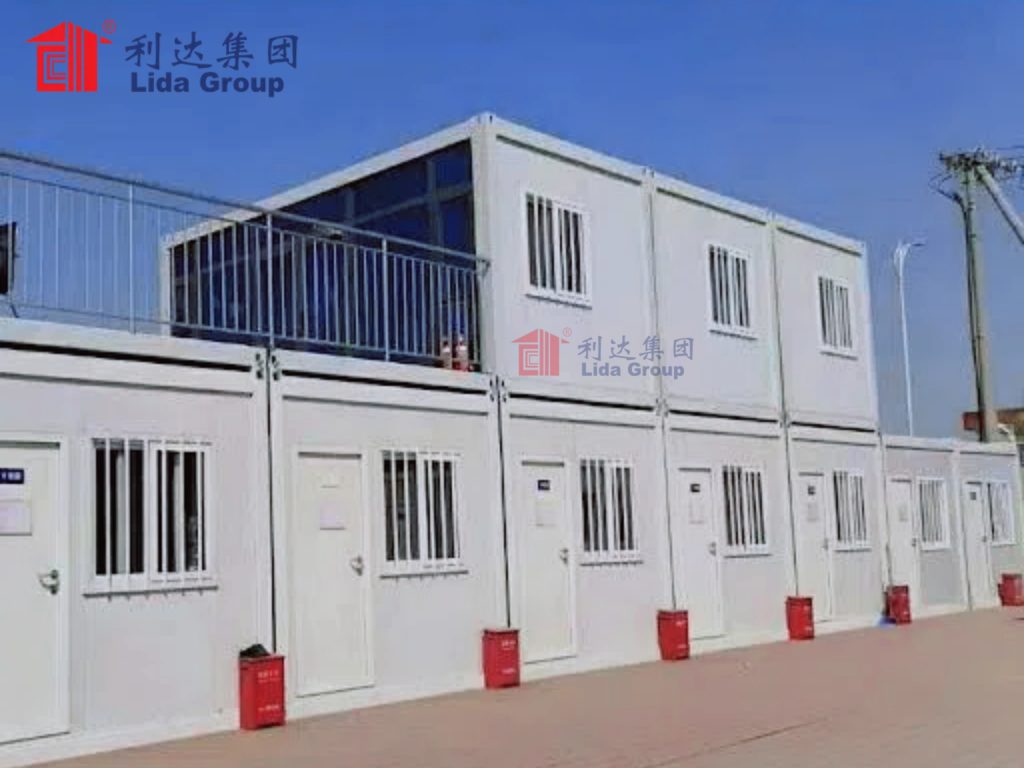
5. Benefits of Lida Group’s Arctic-Grade Accommodation
5.1. Enhanced Worker Safety and Health
The primary benefit of Lida Group’s Arctic-grade dormitories is the protection they provide to workers in extreme conditions. The high-quality building envelope ensures that interior temperatures remain stable and comfortable, reducing the risk of cold-related injuries and illnesses. Proper ventilation and humidity control prevent the buildup of moisture, mold, and indoor air pollutants, promoting better respiratory health.
The inclusion of amenities such as comfortable sleeping quarters, common areas, and sanitary facilities also contributes to workers’ mental well-being, reducing stress and fatigue associated with Arctic living. This, in turn, lowers the risk of accidents and improves overall project safety.
5.2. Improved Productivity and Morale
Workers in comfortable, safe environments are more productive and have higher morale. Lida Group’s dormitories provide a respite from the harsh Arctic conditions, allowing workers to rest, recharge, and socialize. The controlled lighting systems can mimic natural daylight patterns, helping to regulate circadian rhythms and improve sleep quality—critical factors in maintaining productivity during polar night.
Reduced energy consumption and reliable heating also mean fewer disruptions to daily life, such as cold spots or power outages, which can cause frustration and distraction. Higher morale leads to lower turnover rates, reducing the costs associated with recruiting, training, and transporting new workers to remote Arctic sites.
5.3. Energy Efficiency and Cost Savings
The exceptional insulation and air tightness of the building envelope significantly reduce energy consumption for heating. This translates into lower fuel costs—a major expense in Arctic operations, where fuel must be transported over long distances. In some cases, the integration of renewable energy systems can further reduce reliance on fossil fuels, leading to even greater cost savings over the project lifespan.
The modular design also reduces construction and deployment costs compared to traditional building methods. Factory fabrication minimizes waste and labor costs, while rapid on-site assembly reduces the time and expense of maintaining a construction crew in a remote location.
5.4. Environmental Benefits
Lida Group’s Arctic dormitories have a lower environmental impact than traditional accommodation options:
- Reduced Energy Consumption: Lower fuel use decreases greenhouse gas emissions, helping projects meet environmental regulations and sustainability goals.
- Sustainable Materials: The use of recycled steel in container construction and low-VOC (volatile organic compound) materials in insulation and finishes reduces environmental harm.
- Minimal Site Disruption: Prefabricated containers require minimal on-site construction, reducing disturbance to the fragile Arctic ecosystem. They can also be easily removed and reused at the end of a project, leaving little trace.
- Waste Reduction: Factory manufacturing produces less waste than on-site construction, and any waste generated is managed more efficiently in a controlled environment.
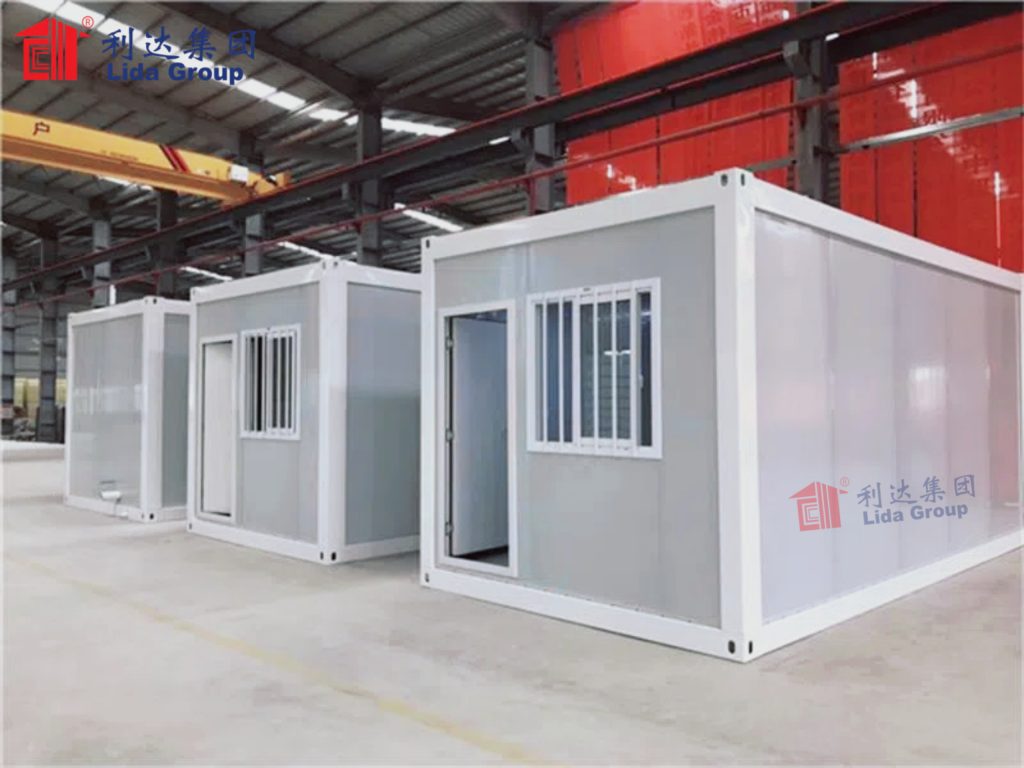
6. Real-World Applications: Arctic Projects Using Lida Group’s Dormitories
6.1. Oil and Gas Exploration Camp in Northern Alaska
A major oil and gas company operating in the North Slope of Alaska required accommodation for 200 workers during exploration activities. The site experiences winter temperatures as low as -55°C and frequent blizzards with wind speeds exceeding 80 km/h.
Lida Group supplied 50 insulated container dormitories, configured into a modular camp with sleeping quarters, common areas, and dining facilities. The building envelope’s high R-value insulation and airtight construction allowed the camp to maintain comfortable interior temperatures with 40% less fuel consumption compared to the company’s previous accommodation.
Workers reported improved sleep quality and reduced cold-related discomfort, leading to a 15% increase in productivity. The camp’s modular design allowed for quick expansion as the workforce grew, and the containers withstood severe winter storms without damage.
6.2. Mining Operation in Nunavut, Canada
A mining company developing a gold mine in Nunavut, Canada, needed to house 150 workers in an area accessible only by air or ice road for eight months of the year. The site is subject to extreme cold (-50°C), heavy snowfall, and polar night for over three months.
Lida Group’s Arctic dormitories were chosen for their transportability and cold-weather performance. The containers were transported by ice road during winter and assembled on-site in just six weeks. The building envelope’s thermal breaks and vapor barriers prevented condensation and ice buildup, while the triple-glazed windows provided natural light during the brief daylight hours.
The dormitories were equipped with solar panels and battery storage, reducing diesel generator usage by 30%. Workers appreciated the comfortable living conditions, with many noting the quiet interior (due to effective sound insulation) and well-regulated temperatures. The mine reported a 20% reduction in worker turnover compared to previous projects in the region.
6.3. Arctic Research Station in Svalbard
A multinational research consortium operating a research station in Svalbard, Norway, required accommodation for scientists and support staff year-round. The station is located in a protected environment with strict environmental regulations and experiences temperatures as low as -40°C.
Lida Group’s container dormitories were selected for their minimal environmental impact and ability to withstand extreme conditions. The modular design allowed the station to expand gradually, with 10 initial units later increased to 20 as research activities grew. The building envelope’s durability protected against polar bears and other wildlife, while the insulation ensured a stable environment for both living quarters and adjacent laboratory spaces.
The research station integrated the dormitories with a geothermal heating system, further reducing reliance on fossil fuels. The containers’ low visual impact and ability to be removed without trace aligned with the protected area’s environmental requirements.
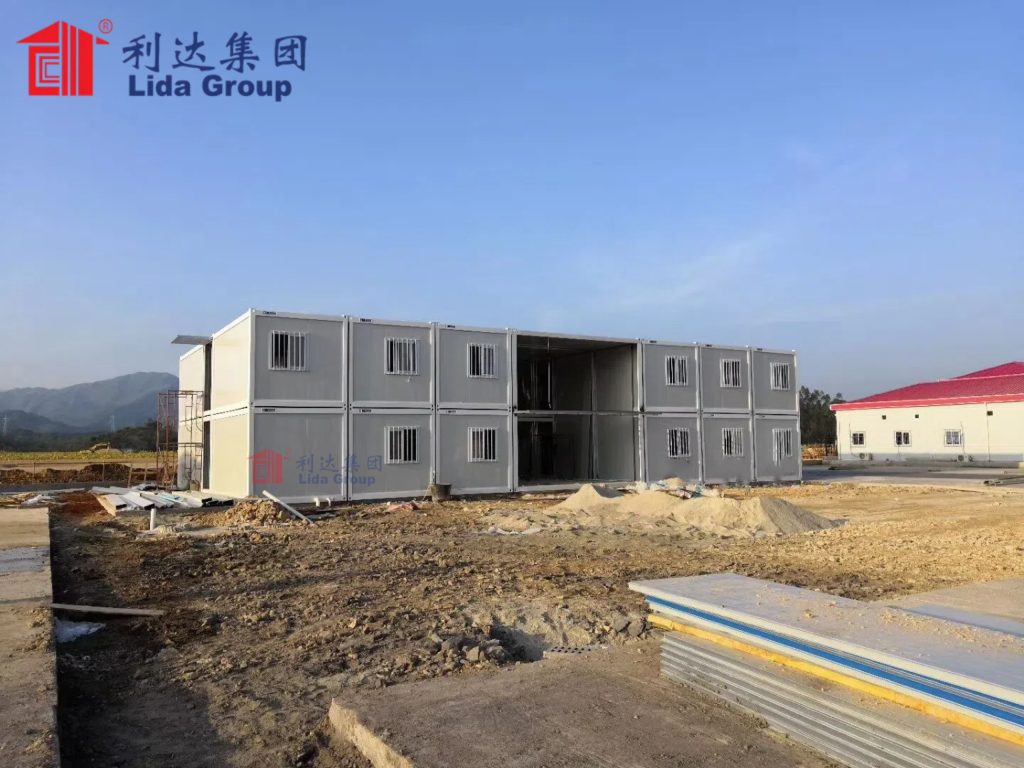
7. Challenges and Solutions in Implementing Arctic-Grade Accommodation
7.1. Extreme Cold and Thermal Management
Maintaining adequate heat in -60°C temperatures is a constant challenge. Lida Group addresses this through:
- Advanced Insulation: Using high-performance insulation materials with high R-values and ensuring continuous coverage without gaps.
- Heating System Redundancy: Installing backup heating systems and ensuring critical components (pipes, pumps) are properly insulated and heated.
- Thermal Modeling: Using computer simulations to identify potential heat loss points during design and optimizing the building envelope accordingly.
7.2. Transportation and Deployment in Remote Locations
Getting large container dormitories to remote Arctic sites is logistically complex. Solutions include:
- Seasonal Planning: Transporting containers during winter via ice roads or in summer via specialized ice-strengthened vessels.
- Air Transport for Smaller Units: Using cargo planes to deliver smaller container modules to sites with no road access.
- Modular Design for Easy Handling: Designing containers to be lightweight enough for transport by helicopter if necessary.
7.3. Condensation and Moisture Control
Moisture from breathing, cooking, and washing can condense in cold environments, leading to mold and structural damage. Lida Group’s solutions include:
- Effective Vapor Barriers: Ensuring a continuous, airtight vapor barrier on the interior of the building envelope.
- Mechanical Ventilation: Using HRVs to remove moist air while retaining heat, maintaining optimal indoor humidity levels (30-5
0% humidity).
- Insulated Pipes and Fixtures: Ensuring all plumbing fixtures and pipes are well-insulated and equipped with trace heating to prevent freezing and condensation.
7.4. Compliance with Strict Environmental Regulations
Arctic regions are subject to some of the world’s most stringent environmental laws. Lida Group ensures compliance by:- Using Eco-Friendly Materials: Sourcing materials with low environmental impact, such as recycled steel and formaldehyde-free insulation.
- Minimizing Carbon Footprint: Designing energy-efficient systems and integrating renewable energy to reduce greenhouse gas emissions.
- Waste Management Protocols: Implementing closed-loop waste systems in factory production and providing on-site waste management solutions for the dormitories.
- Collaborating with Local Authorities: Working closely with Arctic regulatory bodies to ensure all designs and operations meet or exceed environmental standards.

8. Future Outlook for Lida Group’s Arctic-Grade Accommodation
8.1. Technological Innovations
The future of Arctic-grade accommodation will see further integration of cutting-edge technologies. Lida Group is exploring the use of advanced materials, such as aerogel insulation—known for its exceptional thermal resistance at a fraction of the thickness of traditional insulation. This could reduce the weight of container dormitories while enhancing their insulating properties, making transportation even easier.Smart home technologies will also play a larger role. AI-powered climate control systems could learn from worker behavior and environmental conditions to optimize heating and ventilation in real time, further reducing energy use. Integrated sensors could monitor the building envelope’s performance, detecting tiny cracks or insulation gaps before they lead to heat loss, and alerting maintenance teams for proactive repairs.8.2. Expansion of Renewable Energy Integration
As renewable energy technology advances, Lida Group plans to enhance the integration of solar, wind, and even small-scale hydroelectric systems into Arctic dormitories. For example, flexible solar panels could be integrated into the container roofs or walls, capturing sunlight during the polar day to store energy for the dark winter months. Wind turbines designed to withstand Arctic winds could provide a steady power source in regions with consistent wind patterns.Hydrogen fuel cells are also being explored as a backup power solution, offering a clean alternative to diesel generators. These innovations would reduce reliance on fossil fuels even further, aligning with global efforts to decarbonize industrial operations.8.3. Enhanced Worker Well-Being Features
Recognizing the unique mental health challenges of Arctic living, future iterations of Lida Group’s dormitories will focus on improving psychological comfort. This includes:- Light Therapy Systems: Advanced lighting that mimics natural sunlight spectrums to combat seasonal affective disorder (SAD) during polar night.
- Noise Reduction Technologies: Further advancements in sound insulation to create quieter living spaces, reducing stress from external storms or machinery.
- Recreational and Wellness Spaces: Dedicated areas for exercise, meditation, and social activities, equipped with technology such as virtual reality systems to connect workers with their families or simulate outdoor environments.
- Ergonomic Design: Collaborating with ergonomics experts to optimize furniture and living spaces for comfort during long stays in confined environments.
8.4. Adaptation to Climate Change
The Arctic is warming faster than any other region on Earth, bringing new challenges such as thawing permafrost, increased precipitation, and more frequent extreme weather events. Lida Group is designing future dormitories to adapt to these changes. For example, adjustable foundations could accommodate shifting permafrost, while reinforced roofing systems could handle heavier snowfall or rain. The building envelope could also be modified to resist both extreme cold and occasional warmer temperatures, ensuring durability in a changing climate.

-
9. Conclusion
Lida Group’s Arctic-grade insulated container worker dormitories, with their high-quality prefab building envelope, represent a significant advancement in addressing the unique challenges of Arctic accommodation. By prioritizing thermal efficiency, durability, and worker well-being, these structures provide a safe and sustainable solution for industrial and research projects in the world’s harshest environment.The high-performance building envelope—comprising advanced insulation, thermal breaks, weather seals, and vapor barriers—forms the core of their success, enabling the dormitories to maintain comfortable interior temperatures even in -60°C conditions while minimizing energy use. Real-world applications in Alaska, Canada, and Svalbard demonstrate their effectiveness in reducing operational costs, improving worker productivity, and complying with strict environmental regulations.Challenges such as extreme cold, logistical complexity, and moisture control are met with innovative solutions, from advanced insulation materials to smart ventilation systems. Looking ahead, technological advancements and a focus on renewable energy integration will further enhance the performance and sustainability of these dormitories.As Arctic development continues to grow, Lida Group’s Arctic-grade accommodation sets a new standard for responsible, efficient, and worker-centric housing. It proves that with innovative design and engineering, even the most extreme environments can be made safe and comfortable, supporting the vital work of those operating in the far North while protecting its fragile ecosystem.

Related news
-
Mega-Project Efficiency: Prefab Building Solutions Deliver Rapid Container Worker Dormitory Deployment for Remote Construction Sites
2025-08-21 13:21:44
-
Lida Group Raises Worker Welfare Standards with High-Quality Container House Dormitories Using Advanced Prefab Building Technology
2025-08-20 17:56:38
-
Smart Grain Storage: IoT-Enabled High-Quality Steel Warehouses by Lida Group Feature Real-Time Structural Health Monitoring
2025-08-15 17:40:43
contact us
- Tel: +86-532-88966982
- Whatsapp: +86-13793209022
- E-mail: sales@lidajituan.com


